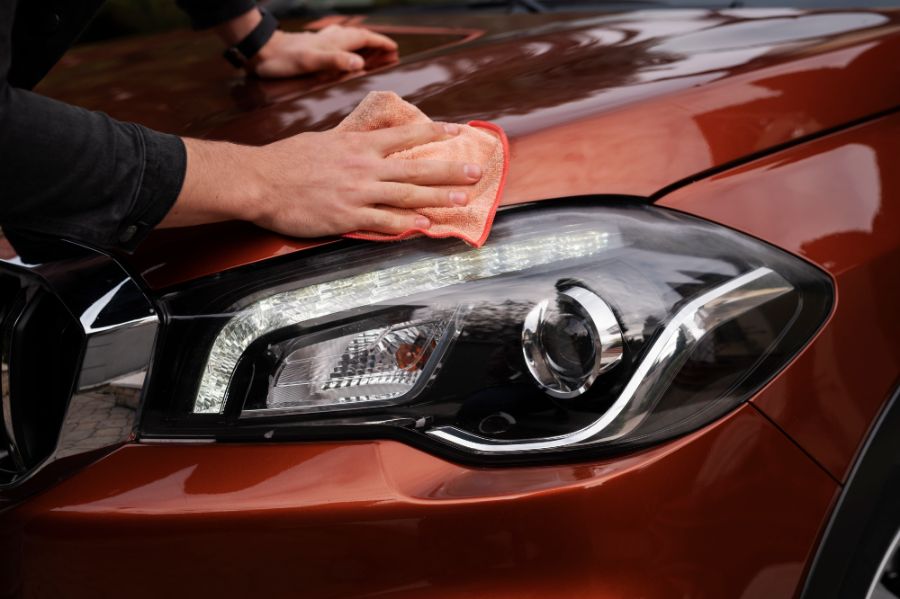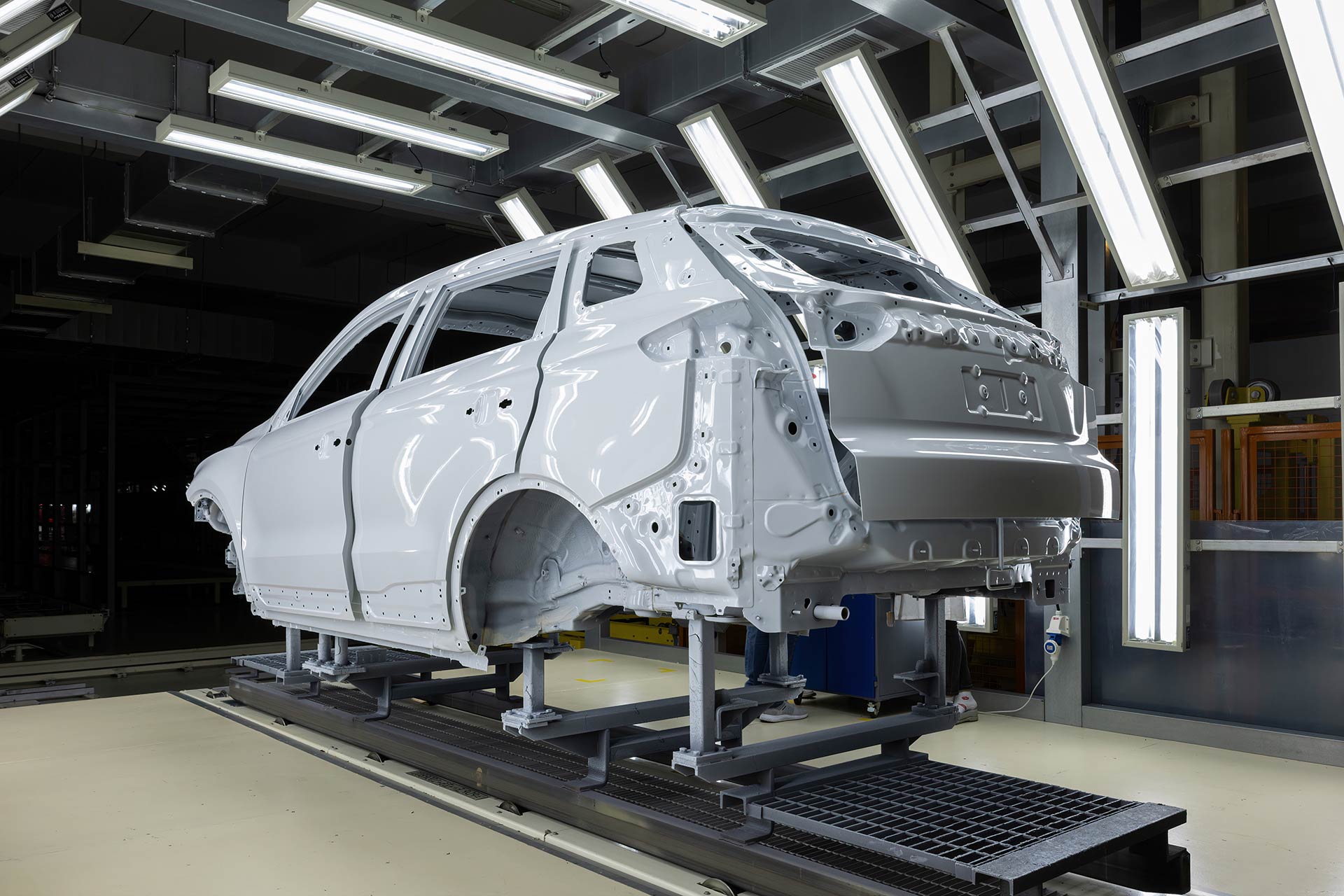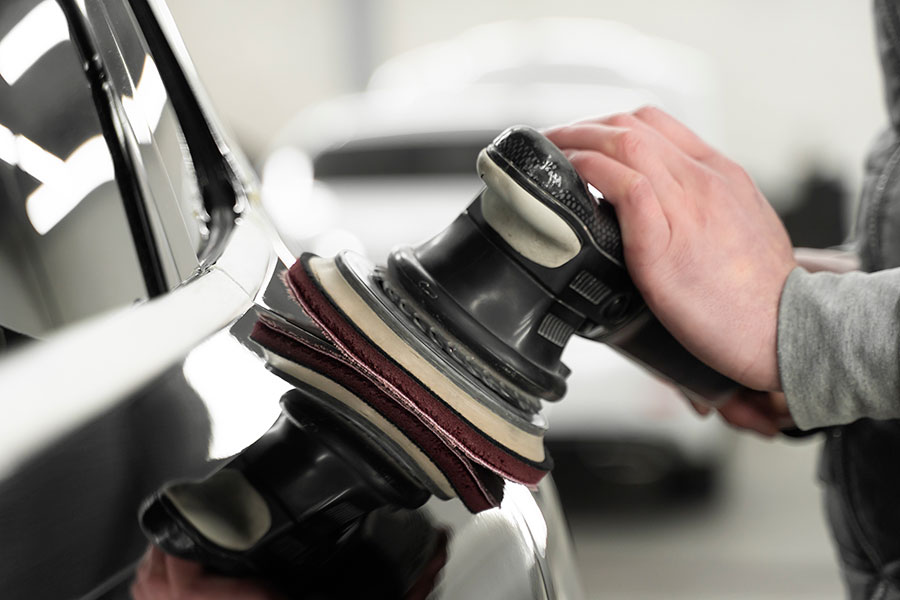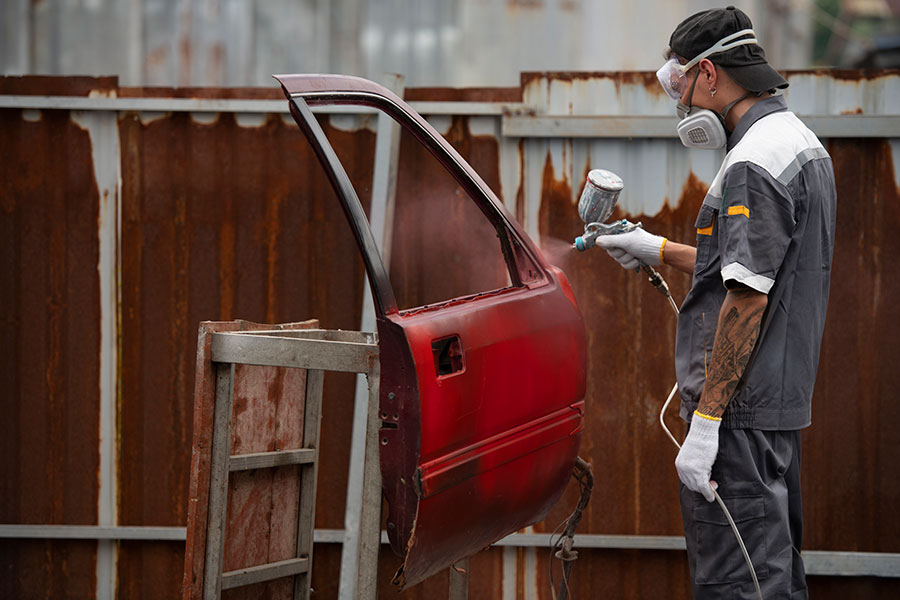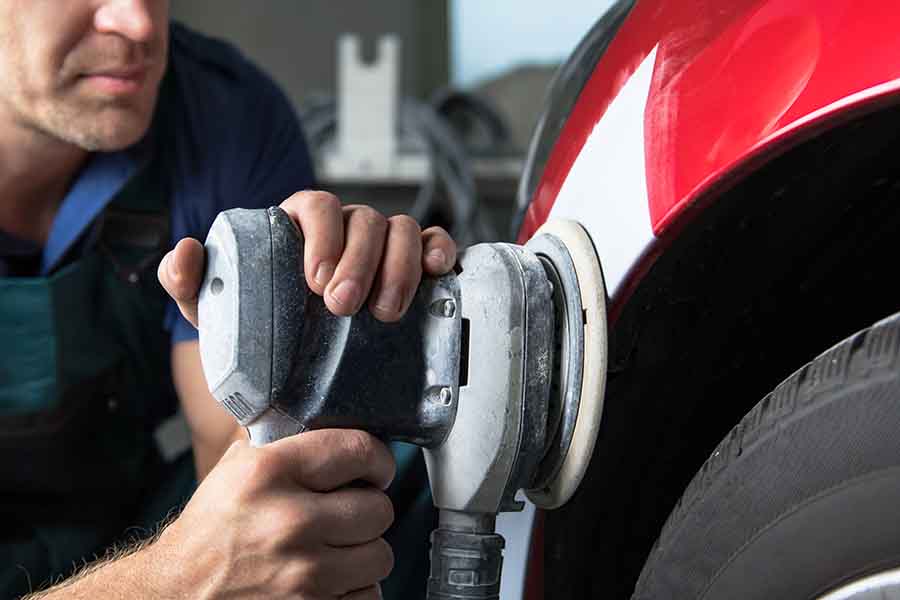Navigating the complex world of auto body repair has transformed significantly with the advent of technology. Gone are the days when manual tracking and paperwork cluttered the desks of repair shops. Today, auto body repair software stands at the forefront of innovation, streamlining operations and enhancing efficiency like never before. This digital leap not only simplifies management tasks but also elevates the customer service experience, making it seamless and more satisfying. Embracing these technological solutions is not just a trend; it's a smart business strategy that propels auto repair businesses into the future.
Embracing Digital Evolution in Auto Body Repair
Shift to Digital
The move from manual processes to digital solutions has transformed the auto body repair industry. Workshops now rely on software for almost every part of their operation. This change has made businesses more efficient and responsive.
In the past, tasks like customer communications, inventory management, and job scheduling relied heavily on paper records and manual input. Today, auto body repair software integrates these functions into a single platform. It saves time and reduces errors. Work orders are created and tracked digitally, making it easier to manage workflow and productivity.
Streamlining Operations
Auto body repair software plays a crucial role in streamlining operations. It offers tools for accurate estimating, invoicing, and reporting. These features help shops manage their finances better and keep customers informed.
With digital documentation, shops can quickly access vehicle history, repair status, and parts inventory. This level of organization is essential for fast-paced environments where delays can affect customer satisfaction. Software solutions also support photo documentation of damages and repairs, providing a clear record for insurance claims.
Documentation Efficiency
Efficient documentation is another benefit of adopting auto body repair software. Gone are the days of misplaced paperwork or incomplete service histories. Digital records are easy to store, search, and share.
This efficiency extends to dealing with insurance companies. The software can generate detailed estimates that meet insurers' requirements, speeding up the approval process. It ensures that both the shop and the customer have a smooth experience from start to finish.
Competitive Edge
Staying updated with technology is vital for auto body shops wanting to stay competitive. The industry is evolving rapidly, with new repair techniques and materials emerging regularly. Shops that leverage the latest software solutions can offer better service and attract more business.
Investing in auto body repair software is not just about improving operational efficiency; it's about adapting to a changing landscape. Shops that embrace digital tools can differentiate themselves in a crowded market by offering faster, more reliable services.
Innovations Transforming Repair Accuracy
Computerized Systems
Computerized measuring systems have revolutionized the auto body repair industry. They allow technicians to assess damage with incredible precision. This technology uses lasers and sensors to create a detailed map of a car's structure. It compares this map to the original factory specifications.
This process ensures that repairs restore the vehicle to its pre-accident condition. It minimizes human error, making the assessment phase quicker and more accurate.
3D Imaging
The integration of 3D imaging and modeling takes the detection of structural issues to a new level. With these tools, technicians can visualize the extent of damage in ways previously impossible.
3D models provide a comprehensive view of a vehicle's framework. They highlight areas needing attention before physical work begins. This insight is crucial for planning efficient repair strategies. It ensures that no underlying issues are overlooked.
AI Predictions
Artificial Intelligence (AI) and machine learning are at the forefront of predicting repair outcomes. These technologies analyze vast amounts of data from past repairs. They identify patterns and predict potential complications.
AI tools offer recommendations for the most effective repair methods. They estimate the time and cost involved with remarkable accuracy. This helps in setting realistic expectations for both technicians and vehicle owners.
Advancements in Repair Materials and Techniques
Lightweight Materials
In the realm of auto body repair, the shift towards lightweight materials is revolutionizing how vehicles are fixed. Innovators are now utilizing aluminum, carbon fiber, and high-strength steel. These materials not only reduce the vehicle's weight but also improve fuel efficiency and performance.
The transition to these advanced materials requires auto body shops to adopt new repair methods. Technicians must learn to handle these materials correctly to maintain the integrity of the vehicle's structure. The use of lightweight materials also demands specialized tools and equipment, making training and investment crucial for modern repair shops.
Welding Techniques
The evolution of welding and bonding techniques is another milestone in auto body repair. Traditional welding methods are being replaced by laser welding and adhesive bonding. These new techniques provide stronger joins, enhancing the vehicle's safety and durability post-repair.
Laser welding offers precision that traditional methods can't match, resulting in cleaner, more robust welds. Adhesive bonding, on the other hand, allows for the joining of different materials without compromising their integrity. This flexibility is vital in repairing vehicles made from a mix of metals and composites.
Eco-Friendly Options
As environmental concerns grow, the auto repair industry is not left behind. Eco-friendly paint and materials are becoming the norm. These options are not only better for the planet but also safer for technicians to work with.
Water-based paints are leading this green revolution. They emit fewer volatile organic compounds (VOCs) than traditional solvent-based paints, reducing harmful emissions. Recyclable materials and parts are increasingly used in repairs, minimizing waste.
Revolutionizing Customer Service with Technology
Online Scheduling
Online appointment scheduling has transformed how customers interact with auto body repair shops. It allows car owners to book repair sessions at their convenience, without the need to call during business hours. This flexibility is a significant upgrade from traditional scheduling methods.
Customers can now choose the best time for them directly from the shop's website. They receive immediate confirmation and reminders as their appointment date approaches. This system reduces missed appointments and enhances customer satisfaction by putting control in their hands.
Status Updates
Auto body repair software has made it easier for shops to keep customers informed about the progress of their vehicle repairs. Customers no longer have to call the shop for updates. Instead, they receive automated messages through text or email.
These updates include key milestones in the repair process, like when the vehicle is being assessed, when repair work begins, and when it's ready for pickup. Customers appreciate this transparency. It builds trust and reduces anxiety about repair times and outcomes.
Digital Estimates
The use of digital estimates and invoices significantly speeds up the approval process for repairs. Customers can receive detailed estimates electronically, review them at their leisure, and approve them with a click. This method is much faster than traditional paper-based processes.
Digital documents are easy to understand and provide a clear breakdown of services and costs. They allow for quicker decision-making by the customer, which in turn helps the repair shop begin work sooner. This efficiency leads to faster turnaround times for repairs.
Customer Feedback
Customer feedback platforms integrated into auto body repair software play a vital role in improving service quality. These platforms enable customers to easily share their experiences after their vehicle has been serviced.
Repair shops can then use this feedback to address any concerns and make improvements where needed. Positive feedback also serves as a powerful tool for attracting new customers, as many people rely on online reviews when choosing a repair service.
Addressing Workforce Challenges through Tech
Training Programs
Auto body repair shops are turning to training programs and simulations. They help technicians master new repair technologies. This approach not only boosts skills but also keeps teams up-to-date with the latest industry standards.
Shops use these programs to simulate real-world scenarios. Technicians practice without the risk of damaging customer vehicles. It's a safe space for learning and perfecting their craft.
Workflow Tools
Workflow management tools are changing how teams work together. These tools optimize productivity by streamlining tasks and communication. Everyone knows what needs to be done and when. This clarity reduces downtime and boosts efficiency.
These tools also provide valuable data. Shops can see where bottlenecks happen and find ways to improve. It's a game-changer for managing busy periods and ensuring customers receive their vehicles on time.
Recruitment Platforms
Finding skilled technicians is a big challenge for auto body repair shops. Recruitment platforms are making this easier. They connect shops with tech-savvy professionals ready to tackle modern repair challenges.
These platforms offer more than just job listings. They feature profiles of candidates, highlighting their skills and experience. Shops can quickly find the right fit for their team, reducing the time and cost associated with hiring.
Adopting Green Practices in Auto Body Repair
Waste Management
Auto body repair shops are turning towards waste reduction and recycling programs. They focus on minimizing waste from the start. This includes using fewer materials and recycling items like metal parts and plastics.
Shops also safely dispose of hazardous waste. This helps protect the environment. They use software to track waste and find ways to reduce it. Recycling becomes easier with this technology.
Energy Efficiency
Another step is using energy-efficient equipment and lighting. This lowers the shop's carbon footprint.
LED lighting is a popular choice. It uses less electricity and lasts longer than traditional bulbs. Auto body shops are also upgrading to energy-efficient tools and machinery. These changes save money on electricity bills over time.
Eco-Friendly Materials
The shift towards water-based paints marks a significant change. These paints are less harmful to the environment than solvent-based options.
Shops are choosing non-toxic materials wherever possible. This includes adhesives and solvents that are safer for both workers and the planet. Using these materials reduces harmful emissions.
Preparing for the Future of Auto Body Repair
Continuous Learning
Auto body repair shops must embrace continuous learning to stay ahead. With technology evolving rapidly, it's crucial to keep up with the latest techniques and tools in the industry. This means regularly training staff and attending workshops or seminars focused on new technologies in auto repair.
Businesses should also invest in online learning platforms. These can provide teams with access to a wide range of courses, enabling them to learn at their own pace. By prioritizing education, shops prepare themselves to handle any challenge the future might bring.
Tech Partnerships
Forming partnerships with tech companies is another step towards future-proofing an auto body repair business. Such collaborations can offer early access to cutting-edge innovations, setting a shop apart from competitors. It allows businesses to test new equipment and software before widely adopting them, ensuring they're a good fit for their operations.
These partnerships can also lead to customized solutions tailored specifically for your business needs, enhancing efficiency and productivity. Embracing these opportunities will ensure that auto body repair shops are not just keeping pace but leading the way in adopting new technologies.
Business Flexibility
The future demands flexibility in business models. As customer expectations evolve and new service offerings emerge, auto body repair shops need to adapt quickly. This might mean expanding services beyond traditional repair work to include things like customization services or integrating more digital solutions for customer interactions.
Shops should also be open to revising their operational strategies. For instance, adopting more sustainable practices as discussed previously can not only benefit the environment but also attract customers looking for green options. Flexibility ensures that businesses can swiftly respond to market changes and customer demands.
Strategies for Success in Modern Body Shops
Customer Focus
Auto body shops must prioritize customer satisfaction. Happy customers are likely to return and recommend your services to others. Implementing auto body repair software can streamline appointment scheduling, updates, and feedback collection. This technology makes it easier for clients to engage with your services.
Customer retention strategies are crucial. Offer loyalty programs or discounts for repeat business. These gestures show you value their patronage and encourage them to stick with your shop.
Online Marketing
Building a strong online presence is essential. Most customers begin their search for auto body repair services online. Create a user-friendly website showcasing your services, before-and-after photos, and customer testimonials.
Social media platforms are powerful tools for reaching potential clients. Regular posts about your work, promotions, and car care tips can attract new business. Engaging with followers builds community and trust around your brand.
Tech Investments
Investing in the latest technology is not optional; it's necessary for growth. Advanced auto body repair software enhances operational efficiency, from estimating repairs to managing inventory. It also ensures accuracy in quotes and reduces turnaround times, improving overall customer experience.
Financial planning is key when adopting new technologies. Budget for both immediate purchases and long-term investments in equipment and software upgrades. This planning ensures you stay competitive and can adapt to industry changes.
Growth Planning
Sustained growth requires strategic planning. Identify areas for expansion, such as offering specialized repair services or opening new locations. Understand market demands and adjust your business model accordingly.
Networking with insurance companies can also drive business to your shop. Establishing partnerships or becoming a preferred provider can significantly increase your customer base.
Closing Thoughts
The auto body repair industry is on the brink of a tech revolution, and you're right in the middle of it. Embracing digital tools not only boosts accuracy and efficiency but also transforms customer service and tackles workforce challenges head-on. By adopting green practices, your shop takes a step towards sustainability, preparing for a future where technology and eco-friendliness go hand in hand. Success lies in staying ahead, constantly evolving with innovations in repair materials, techniques, and strategies tailored for modern body shops.
Now's the time to gear up and ride the wave of digital evolution. Whether it's enhancing repair accuracy, revolutionizing customer interactions, or adopting sustainable practices, the power is in your hands. Dive into auto body repair software solutions today and set your business up for success tomorrow. Let's reshape the future of auto body repair together.
Frequently Asked Questions
How does auto body repair software enhance repair accuracy?
Auto body repair software improves accuracy by providing precise estimates, 3D imaging for damage assessment, and access to the latest repair protocols, ensuring repairs meet manufacturer standards.
Can auto body repair software improve customer service?
Yes, it significantly enhances customer service by streamlining appointment scheduling, offering real-time updates on repair status, and facilitating direct communication between the shop and the customer.
What role does technology play in addressing workforce challenges in auto body shops?
Technology offers solutions like training platforms for skill enhancement and automation tools that reduce manual workload, enabling technicians to focus on complex repairs and improve productivity.
How does adopting green practices through auto body repair software benefit shops?
Adopting green practices via software helps shops manage waste more efficiently, comply with environmental regulations, and use resources more effectively, leading to cost savings and a better brand image.
What are some strategies for success in modern auto body shops?
Strategies include investing in the latest repair technologies, focusing on customer experience, adopting sustainable practices, and continuous staff training to keep up with automotive advancements.
How is the future of auto body repair being shaped by digital tools?
Digital tools are preparing shops for the future by integrating advanced diagnostics, AI-driven estimations, and mobile apps that enhance operational efficiency and adaptability in a rapidly evolving industry.

